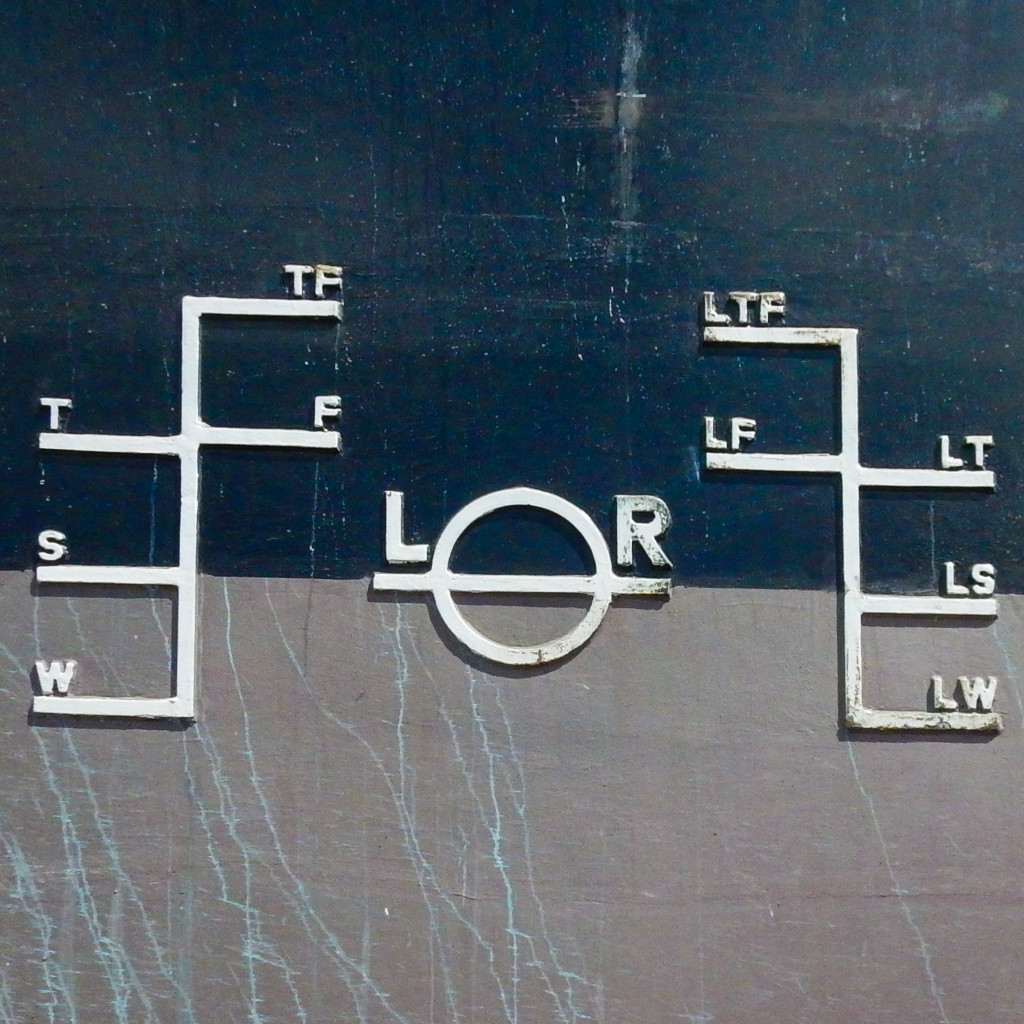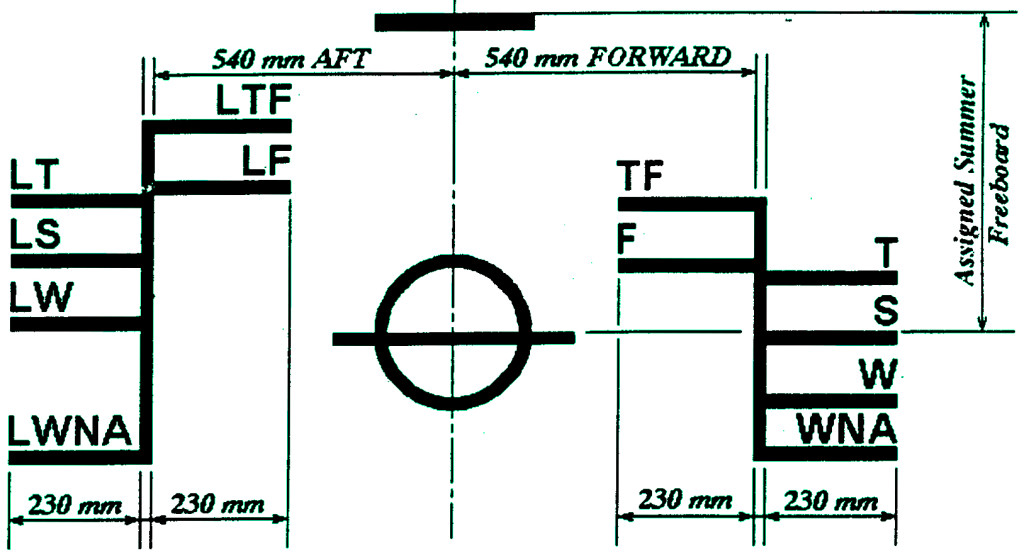The Load Line Convention
This page outlines the main requirements of the Load Line Convention in 1966 as amended by the 1988 Protocol. It then explores the load line marking of ships as well as the documentation required under the convention as it applies to the ship’s master.

What are the principles of the Load Line Convention?
The four principles of the International Convention on Load Lines, 1966 as modified by the Protocol of 1988 relating thereto, (hereafter: LL66/88) can be summarised as:
- Adequate structural strength
- Protection of safe means of access for the crew
- Watertight integrity of ship's hull below freeboard deck
- Preserve reserve buoyancy by establishing minimum permissible freeboards.
***
Born on this day in 1824, Samuel Plimsoll, whose #Plimsoll ‘load line’ on #MerchantNavy ships served to save #seafarers lives https://t.co/lDOxJ8ITZN pic.twitter.com/KEI0fWtkWW
— Campaigning for seafarers (@SeafarersWeek) February 10, 2019
Structure of the Load Line Convention 1966/88
- The LL Convention contains 34 articles directing the actions of the signatory States concerning the implementation of the convention.
- Annex I contains the regulations for determining the load lines and is divided into four chapters:
- Chapter I - General regulations concerning application
- Chapter II - Conditions of assignment of freeboard
- Chapter III - Freeboards
- Chapter IV - Special requirements for timber freeboards
- Annex II contains regulation zones, areas and seasonal periods
- Annex III contains the forms of certificates required under LL 66/88.
***
To which ships does the Load Line Convention apply?
The convention applies to the following ships engaged in international voyages:
- ships registered in countries the governments of which are contracting governments
- ships registered in the territories to which the current convention is extended under Article 32
- unregistered ships flying the flag of a State, the government of which is a contracting government
***
Which vessels are exempt from the Load Line Convention?
The Load Line Convention does not apply to the following vessels:
- Ships of war
- New ships of less than 24m
- Existing ships of less than 150gt
- Pleasure yachts not engaged in trade
- Fishing vessels
***
Certification and verification schedule under LL 66/88.
The purpose of the 1988 Protocol in the main, was to apply the Harmonised System of Survey and Certification. Under LL66/88, the following applies:
- Initial surveys must be conducted before a ship is put into service. This ensures that the structure, equipment, materials, scantling and markings comply with the current convention.
- Annual surveys must be undertaken within three months of the anniversary to ensure that:
- There have been no alterations to the hull or superstructure that affect the calculated positioning of the load line marks.
- Fittings and appliances to protect openings, guardrails, freeing ports and means of access for crew quarters are in good condition.
- The freeboard marks are correctly and permanently indicated.
- The required information concerning the loading and discharging of cargo is provided.
- Renewal surveys must be conducted at intervals not exceeding five years to ensure that the structure, equipment, arrangements, materials, scantling and markings comply fully.
***
What is the duration and validity of the International Load Line Convention?
ILLC is a five-year certificate.
***
Under what circumstances can an International Load Line Certificate cease to be valid?
The ILLC can become invalidated when any of the following conditions arise:
- Material alterations have been made to the hull or to the superstructure that would necessitate a reassignment of the freeboard.
- Fittings and appliances mentioned in the Conditions of Assignment are not maintained in an effective condition.
- The certificate is not endorsed to attest that the ship has been correctly surveyed in accordance with the required survey schedule.
- The structural strength of the ship is depleted to such an extent that the ship is unsafe.
***
Definitions of some key terms of the LL66/88
Block Coefficient is the volume of moulded displacement divided by the volume of length, breadth and moulded depth.
Freeboard is the distance measured vertically downwards in midships, from the upper edge of the deck line to the upper edge of the related load line.
Freeboard deck is normally the uppermost complete deck exposed to weather and sea, which has a permanent means of closing all openings in the weather area and below, which are openings on the ship's side and can be permanently closed off.
Moulded depth is the vertical distance measured from the top of the keel to the top of the freeboard deck beam at the side.
Load line mark comprises a circle of 300mm diameter intersected by a horizontal 450mm in length, the upper edge of which passes through the centre of the circle.
The centre of the ring shall be placed amidships and at a distance equal to the assigned summer freeboard measured vertically below the deck line.
The Superstructure is a decked superstructure on the freeboard deck extending from the side to side of the ship or with the side plating not being on board of the shell plating, more than 40% of the breadth.
Weathertight means that in any sea condition, water will not penetrate the ship.
Watertight means that the arrangement can prevent the passage of water in either direction including while also allowing for a pressure increase water for the maximum head of water which it might have to sustain.
Deck line is a horizontal line meeting the following requirements:
- 300mm in length
- and 25mm in breadth
- marked amidships on each side of the ship
- its upper edge shall normally pass through the point where the continuation outwards of the upper surface of the freeboard deck intersects the outer surface of the shell
***

What does LL66/88 say about the submersion of the load line?
When the vessel is put to sea, during the voyage and upon arrival, the appropriate load line on the side of the ship, corresponding to:
- season of the year, and
- the applicable zone at any time,
must not be submerged.
***
Anyone fancy shouting at #MPs and calling them villains? Samuel #Plimsoll did just that - and #seafarers worldwide should be thankful! https://t.co/gn4N7NZcRi pic.twitter.com/TMGhcT2xRP
— Campaigning for seafarers (@SeafarersWeek) May 2, 2019
How applicable load lines should be marked?
All assigned load lines must be marked amidships on each side of the ship, together with the deck line.
Freshwater load line is indicated by the upper edge of the line marked F. The difference between this line and the Summer load line is the allowance to be made for loading in freshwater.
Tropical load line is indicated by the upper edge of the line marked T.
Summer load line is indicated by the upper edge of the line, which passes through the centre of the circle and is marked by the letter S.
Winter load line is indicated by the upper edge of the line marked W.
Winter North Atlantic load line is indicated by the upper edge of the line marked WNA.
*** *** *** *** ***
Thanks for reading this far. Have I covered everything? Is there anything that I have missed? Please comment below.
New content will regularly be added to TheMasterMariner.com, so please subscribe for the latest updates.